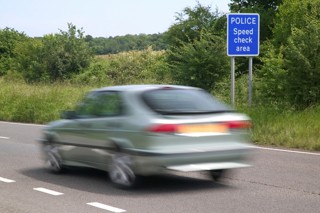The Government has launched a review into roads policing to establish why the number of road casualties has plateaued since 2010.
There are currently an average of five fatalities and 68 serious injuries every day on Britain’s Roads.
In the UK, there were 1,905 road deaths in 2010; provisional figures suggest there were 1,926 deaths in 2019.
For this reason, the Department for Transport (DfT) has instituted a roads policing review working with the Home Office, the National Police Chiefs’ Council and other agencies.
As part of this review, it is exploring how it can better use intelligence to target dangerous behaviours, how technology can assist in enforcing road traffic law now and in the future and also how to better understand the value of enforcement in influencing road user behaviour and the current enforcement capability.
“Safety is our focus but it is recognised that other problems also arise when people do not obey traffic laws. This non-compliance can lead to incidents such as breakdowns and collisions which result in roads being closed or traffic flow being restricted. The consequences of such incidents are delay and disruption as well as an increase in pollution,” said Baroness Vere of Norbiton, Parliamentary Under Secretary of State in the Department for Transport.
In the call for evidence document, the Government says it is seeking to identify how the use of existing enforcement capabilities, and any enhancement of these, will deliver the biggest impact for road user safety primarily but also congestion management and the environment. Calls for evidence run until October 5, 2020.
The RAC Report on Motoring 2019 states that the single most widespread concern among respondents was hand held mobile phone use by other drivers.
It also reported that over half the drivers surveyed admitted to exceeding the speed limit. DfT speed compliance statistics provide further evidence that speeding is a common behaviour. At the same time there is evidence of public disquiet about levels of enforcement.
Speeding increase during lockdown
A new study analysing traffic speeds during lockdown reveals a significant increase in speeds on roads when the volume of traffic falls.
The research project, undertaken by Agilysis, brings together data from several local authorities in rural and urban settings and looks at how traffic levels changed post-lockdown, and the impact on drivers’ speed choice.
Richard Owen, the lead author, said: “When we initially reviewed the data in early April there was a clear increase in vehicle speeds during lockdown that was strongly associated with reduced traffic volumes.
“This comprehensive study has now demonstrated that offending behaviour has skyrocketed, especially on rural roads, where previously compliance with the limit has been good.”
Traffic flows in the post-lockdown period reduced by between 58-64% – with the biggest declines recorded on roads with speed limits above 50mph.
When transformed for flow, a drop of 10,000 vehicles per day on a single stretch of 60mph road was matched by an increased average speed of 2.2mph.
High-end speeding was also found to be a problem on 60mph roads, with vast increases in the proportion of drivers travelling more than 15mph above the limit.
Agilysis says the results demonstrate the importance of speed enforcement, especially at times when more people are walking and cycling.
The Agilysis report concludes there isn’t enough evidence available yet to indicate whether the changes in speeds, especially on rural roads, resulted in more road deaths and serious injuries.
However, DfT figures indicate that casualties have largely dropped in line with reducing traffic levels.
Police forces across the UK have caught drivers speeding during the lockdown, with one driver breaking the legal limit by 81mph and another clocked doing 108mph in a 40mph zone.





















Login to comment
Comments
No comments have been made yet.